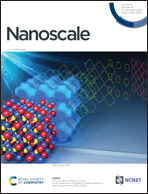Effects of carbon nanotube-mediated Caspase3 gene silencing on cardiomyocyte apoptosis and cardiac function during early acute myocardial infarction†
Abstract
RNA interference (RNAi) technology can achieve efficient and specific silencing of Caspase3 gene expression, thus providing new options for anti-apoptosis treatment. However, delivering siRNA to specific cells and tissues in the body is a significant challenge. Therefore, we aim to construct a functionalized single-walled carbon nanotube (F-CNT) bound to siRNA from Caspase3. The obtained gene transfer carrier F-CNT-siCas3 not only demonstrated a good water solubility and biocompatibility, but also had a high transfection efficiency of up to 82%, which significantly downregulated the expression level of the Caspase3 gene miRNA and protein in primary cardiomyocytes. Furthermore, it was verified by in vivo experiments that Caspase3 gene silencing had obvious protective effects on myocardial cell apoptosis, ventricular remodeling, and cardiac function in Sprague-Dawley (SD) rats after coronary artery ligation. This study may provide an important theoretical basis for the application of F-CNT in vivo siRNA gene therapy to treat cardiovascular diseases.



 Please wait while we load your content...
Please wait while we load your content...